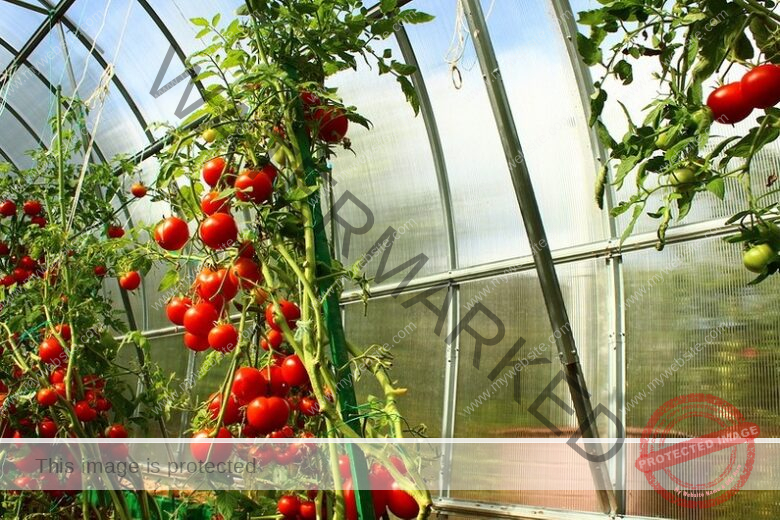Here is an ultimate guide on plantain farming success! In this article, we will explore the 12 best agronomic practices that can help you achieve optimal yields and profitability in your plantain farm.
It doesn’t matter if you are a beginner or an experienced farmer, implementing these practices will undoubtedly contribute to your success. So let’s dive in and uncover the secrets to a thriving plantain farm!
12 Best Agronomic Practices On Plantain Farm [Plantain Farming Success Guide]
1. Selecting the Right Plantain Variety
The choice of plantain variety plays a crucial role in determining the success of your farm. Consider factors such as yield potential, disease resistance, and market demand when selecting the variety. Some popular plantain varieties include Agbagba, Orishele, and Obino L’Ewai. Conduct thorough research and consult local agricultural experts to make an informed decision.
2. Proper Land Preparation
Before planting, it is essential to prepare the land adequately. Clear any weeds, debris, or rocks that may hinder plant growth. Plow the field and incorporate organic matter to enhance soil fertility. Additionally, ensure proper drainage to prevent waterlogging, which can negatively impact plantain growth.
3. Optimal Planting Techniques
When planting plantain suckers, follow these best practices:
- Dig holes of appropriate depth and width, allowing sufficient space for root development.
- Place the suckers in the holes at a slight angle, ensuring the corm is covered with soil.
- Plant the suckers at a spacing of 3-4 meters between rows and 2-3 meters between plants within rows.
- Water the newly planted suckers generously to promote establishment.
4. Adequate Nutrient Management
Proper nutrient management is vital for healthy plantain growth. Conduct a soil test to determine the nutrient requirements of your farm. Based on the results, apply organic or inorganic fertilizers accordingly.
Common nutrient deficiencies in plantain include potassium, nitrogen, and phosphorus. Regularly monitor the nutrient levels and adjust fertilization practices as needed.
5. Efficient Irrigation Techniques
Water is a critical factor in plantain farming success. Ensure your farm has access to a reliable water source. Employ efficient irrigation techniques such as drip irrigation or sprinkler systems to provide the plants with adequate moisture. Monitor soil moisture levels and irrigate accordingly, avoiding both water stress and waterlogging.
6. Effective Weed Control
Weeds compete with plantains for nutrients, water, and sunlight. Implement effective weed control measures to minimize their impact. Manual weeding, mulching, and the use of herbicides can all contribute to successful weed management. Be cautious when using herbicides and follow the recommended application rates to prevent damage to the plantains.
7. Pest and Disease Management
Plantains are susceptible to various pests and diseases, including nematodes, banana weevils, and black Sigatoka. Implement integrated pest management strategies to minimize their impact. Regularly inspect your plants for signs of infestation or disease and take appropriate measures, such as biological control, cultural practices, or targeted pesticide application, if necessary.
8. Proper Pruning and Deleafing Techniques
Pruning and deleafing are essential cultural practices that promote healthy plantain growth. Remove dead or diseased leaves regularly to prevent the spread of diseases. Prune excessive suckers to ensure optimal fruit development and facilitate good air circulation within the plantain plantation.
9. Mulching for Soil Conservation
Mulching is a beneficial practice for soil conservation in plantain farms. Apply organic mulch, such as straw or dried leaves, around the base of the plants. Mulching helps retain soil moisture, suppress weed growth, and improve soil structure. It also provides insulation during extreme weather conditions.
10. Timely Harvesting
Knowing the right time to harvest plantains is crucial for obtaining high-quality produce. Harvest the plantain bunches when they reach the desired maturity stage. Premature harvesting results in low-quality fruits, while delayed harvesting can lead to overripening and loss of market value. Monitor the color changes and firmness of the fruits to determine the optimal harvest time.
11. Proper Post-Harvest Handling
After harvesting, handle the plantains with care to avoid physical damage and minimize post-harvest losses. Sort and grade the fruits based on their size and quality. Pack them in suitable containers or boxes for transportation and storage. Maintain proper ventilation and temperature conditions to prolong the shelf life of the produce.
12. Marketing and Value Addition
To maximize the profitability of your plantain farm, develop effective marketing strategies and explore value addition opportunities. Identify potential buyers, such as local markets, restaurants, or food processing companies. Consider diversifying your product range by producing plantain chips, flour, or other value-added products.
What is the ideal planting season for plantains?
The ideal planting season for plantains is during the rainy season when there is sufficient soil moisture. In tropical regions, this typically falls between March and May or September and November.
How long does it take for plantains to bear fruit?
Plantains typically take 10 to 12 months to bear fruit after planting.
How often should I apply fertilizer to my plantain farm?
Fertilizer application frequency depends on various factors such as soil fertility, nutrient requirements, and the stage of plant growth. Generally, split the fertilizer application into three or four doses throughout the growing season.
Can I intercrop plantains with other crops?
Yes, intercropping plantains with compatible crops such as legumes or vegetables can enhance land productivity and provide additional income. However, ensure the intercrops do not compete excessively with the plantains.
How do I control black Sigatoka disease in plantains?
To control black Sigatoka disease, use a combination of cultural practices and targeted fungicide applications. Remove and destroy infected leaves, ensure good air circulation within the plantation, and follow a recommended spray schedule using approved fungicides.
Is organic farming feasible for plantains?
Yes, organic farming practices can be adopted for plantain cultivation. Organic fertilizers, biological pest control methods, and natural weed management techniques can be employed to minimize synthetic inputs.
Conclusion
By implementing these 12 best agronomic practices on your plantain farm, you are well on your way to achieving success and profitability.
Always select the right variety, prepare the land adequately, and prioritize proper nutrient management, irrigation, and pest control. With careful attention to detail and consistent farm management, your plantain farm will thrive and yield bountiful harvests. Happy farming!




